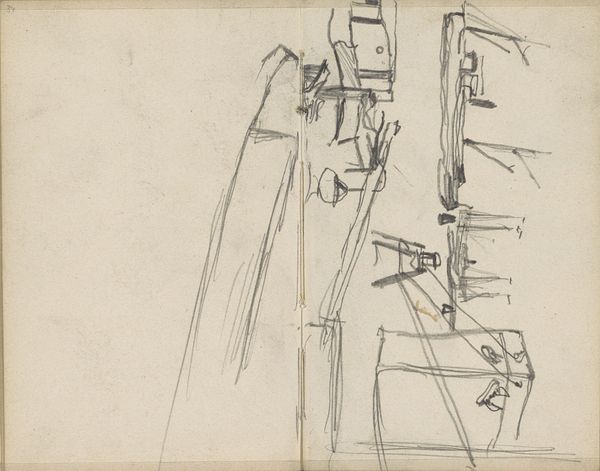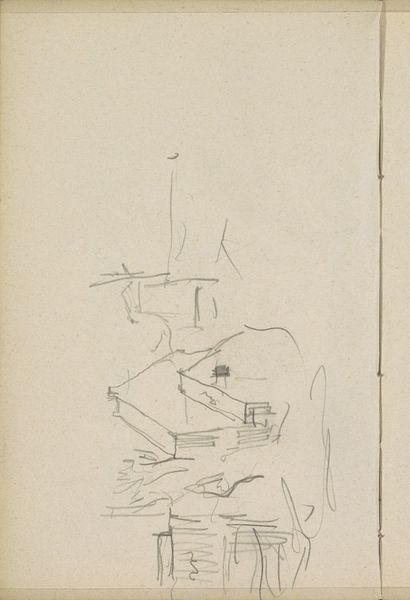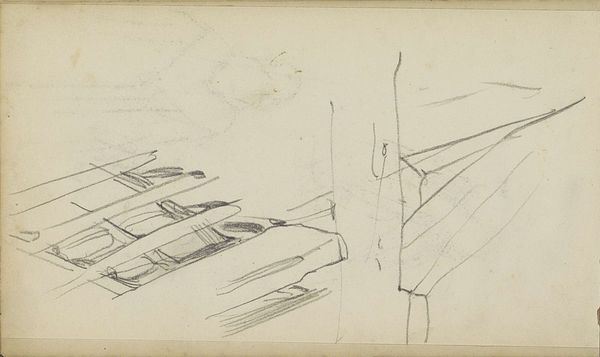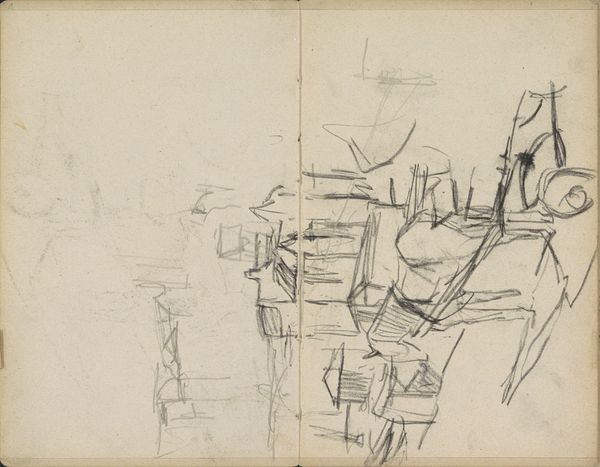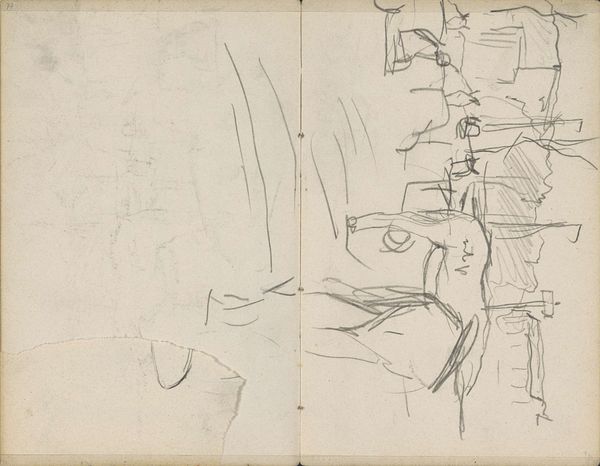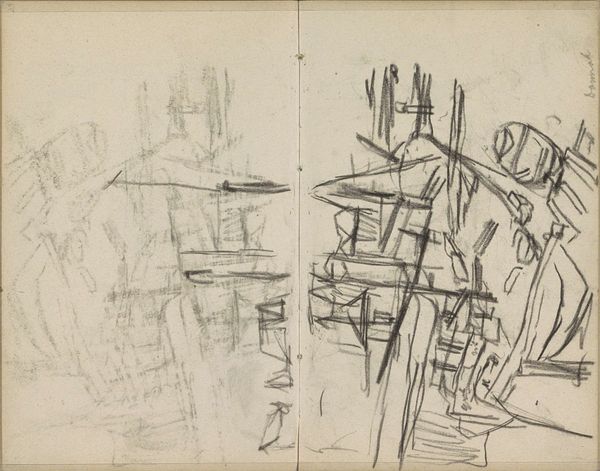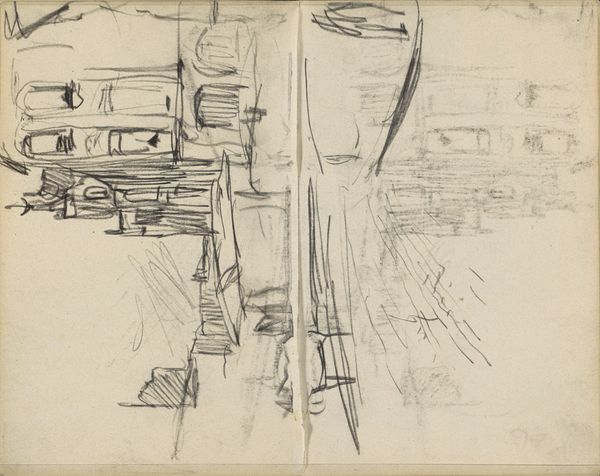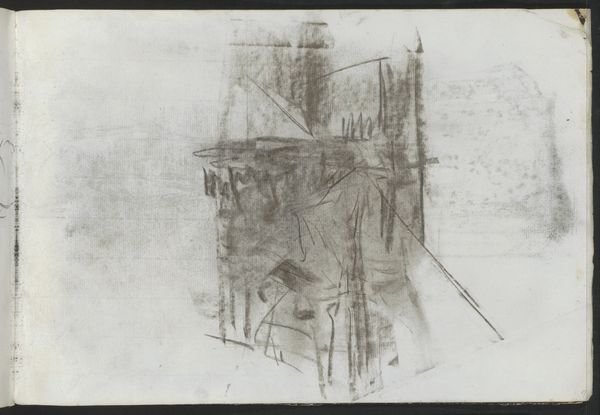
drawing, paper, pencil
#
drawing
#
aged paper
#
light pencil work
#
pencil sketch
#
sketch book
#
landscape
#
paper
#
personal sketchbook
#
idea generation sketch
#
sketchwork
#
pencil
#
sketchbook drawing
#
genre-painting
#
storyboard and sketchbook work
#
sketchbook art
Dimensions: height 110 mm, width 183 mm
Copyright: Rijks Museum: Open Domain
Curator: This is "Studieblad met roeren van zeilschepen," or "Study Sheet with Rudders of Sailing Ships," by Hendrik Abraham Klinkhamer. It's a pencil drawing on paper, created sometime between 1820 and 1872, and is held at the Rijksmuseum. Editor: My first thought is, what a cool way to see process! These almost ghostly ship forms feel raw and immediate, like a behind-the-scenes glimpse into the artist's mind as he figures things out. Curator: Yes, the very immediacy is appealing. As a study sheet, it offers a window into the symbolism of seafaring in 19th-century Dutch culture. The ships weren’t just transport; they were potent symbols of trade, exploration, and national identity. You get that feeling of potential here. Editor: Absolutely. But it’s also about the work of shipbuilding. Look at the different angles, the variations in the rudders. Klinkhamer isn’t just depicting ships; he’s breaking down their construction. The paper itself is aging, lending a feeling that manual artistic work is often about patient repetition over time. Curator: Consider also the ghostlike figure to the side. Its presence emphasizes the human element inextricably connected to maritime ventures—labor, ingenuity, risk, and perhaps, aspiration. This is about human ambition. Editor: I think what really grabs me is how un-precious this drawing feels. You know, the utilitarian aspect. This was a working document, something that facilitated the creation of perhaps larger, grander pieces, underscoring that 'high' art is underpinned by 'low' labor and planning. It asks: How were ships and artistic mastery built, stroke by stroke, from concept to material reality? Curator: The stark pencil work provides insight, too. It highlights the artist's thought process. What were the nautical symbols that interested Klinkhamer, and how were these studies instrumental for their inclusion in larger projects? Editor: Indeed. These aren’t just lines on a page. They are records of skilled hands shaping objects, industries, economies. The materiality—pencil on paper—captures the immediacy of creative labor. It is an interesting commentary on commerce and creativity. Curator: Thinking about it further, I realize how skillfully it invites reflections of that by-gone era of sea trade and nautical advancement. Editor: Right, that a modest sketch holds immense insight into production of maritime commerce as well as the practice of image-making.
Comments
No comments
Be the first to comment and join the conversation on the ultimate creative platform.

